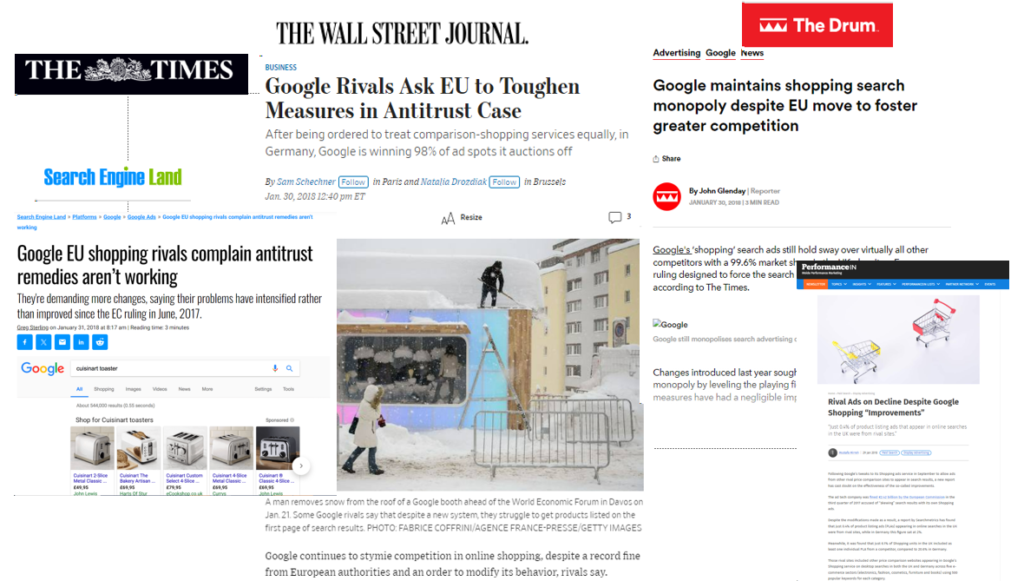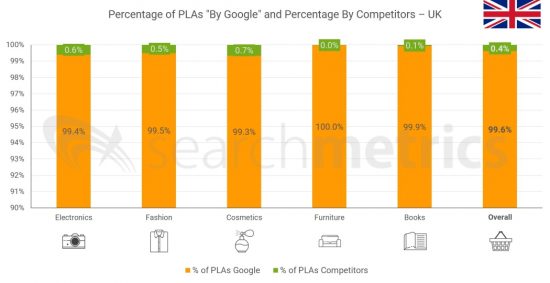A new study by Cloudnine PR’s client Searchmetrics has landed PR coverage in The Times, The Wall Street Journal and a host of other marketing and technology publications this week.
Searchmetrics, a specialist in search and content marketing technology, was one of the first companies to analyse the make-up of Google’s shopping service in Europe after the search giant was forced to make changes in order to satisfy the EU’s antitrust concerns.
Google Shopping displays relevant product ads and carousels when it appears that a searcher is shopping for a specific product. The EC regulator imposed a hefty £2.2bn fine on the search giant for favouring its own ads over those from rival shopping and price comparison services.
In response, Google changed the service in Europe to allow other comparison sites to bid for ads (known as product listing ads – PLAs) alongside Google’s own shopping ads.
However, the Searchmetrics study (which is published in full on its blog) suggests the new-look Google Shopping is still dominated by Google’s own ads despite the changes. In the UK, only 0.4% of the PLAs that appear in desktop searches in the shopping service have been found to be from Google’s rivals. In Germany, it is 2%.

Searchmetrics analysed how frequently rival comparison services appeared in the shopping units in Google desktop searches in both countries using data collected at four points in December. The results tracked five of the biggest eCommerce sectors – Electronics, Fashion, Cosmetics, Furniture and Books using 500 popular keywords for each category (2,500 in total) in each country.
In both countries, cosmetics and electronics are the sectors with the highest competitor presence. Of the rivals who appeared, Kelkoo.co.uk was most visible (had the most PLAs in the data that was gathered) in the UK – and Moebel.de was most visible in Germany.